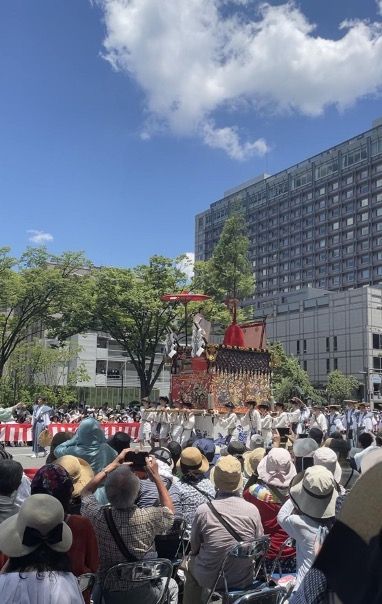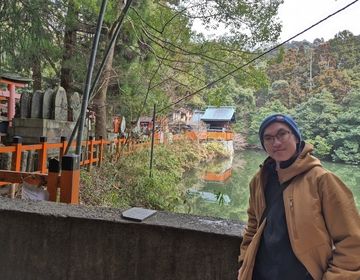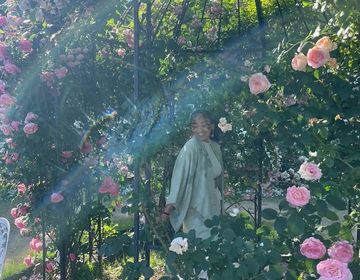Temples, Shrines, Festivals, and Kyoto!
Hi, I’m Daniella (or Dani), and I participated in the CIEE Kyoto Summer Ancient + Modern Japan 2023 program! Living right outside of Los Angeles, my knowledge of Japanese culture was relatively limited, albeit less limited than most, as the area I live in is very diverse, and my grandma is from Yokohama. So, while I grew up experiencing delicious Japanese food, New Years’ festivals in Little Tokyo, and lots of Japanese TV and film, I had never been to Japan and didn’t know much about the language or the specifics surrounding things such as festivals, temples, and shrines. Kyoto, a city that’s preserved much of its culture through all three of these, seemed like a logical choice for me! Its proximity to Osaka and Tokyo was something I think is ideal as well, and I definitely took full advantage of it by taking overnight trips to both, before and after classes began as well. While both were extremely fun, no city has offered me the same amount of cultural enrichment and knowledge as Kyoto.
Kyoto is known for its numerous temples and shrines, and is the type of city where you can come across beautiful temples and shrines while simply walking around. One of their most popular, Kiyomizu-dera, was one of my favorites. From this UNESCO World Heritage Site in the mountains of Eastern Kyoto, you can explore surrounding shopping streets, see a view of the city and lush forest from large observation decks, receive goshuin (Buddhist calligraphy seals or stamps that are put in special books called goshuin-cho, originally traditionally used by monks on pilgrimage as a way to show their devotion to their spiritual practice), and see preserved artworks inside the temple. These preserved artworks include wood sculpture and paintings entirely unique to Kiyomizu-dera. Personally, the goshuin I’ve received are my most treasured ways of commemorating all of the Buddhist temples I’ve been lucky enough to experience, as each one is different, and Kiyomizu-dera was one of the most gorgeous places I’ve been. Most of the time, you have the privilege to watch the monks do the calligraphy in your goshuin-cho, so that every time you look at it, all the memories of the day can come back to you later.
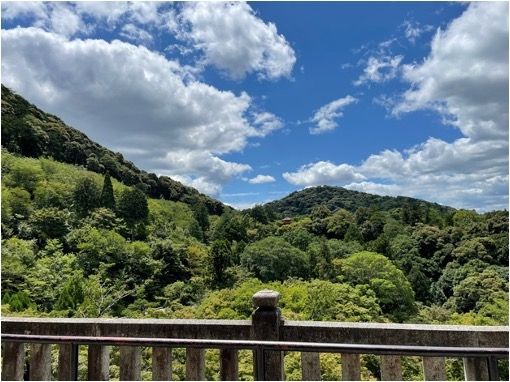
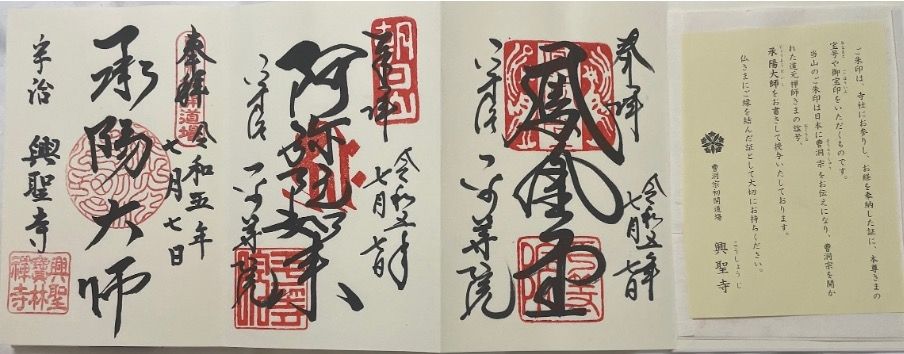
While I really enjoy visiting Buddhist temples, as a lover of a good hike, I can’t do a blog post without mentioning Fushimi Inari and the Yoimiya and Motomiya festivals that they hold for two nights at the end of July. I visited Fushimi Inari twice during my time here, and both times I was so taken by the serenity of it. While it’s certainly a lot of stairs, all of it is interspersed with cats (that actually let you pet them!), beautiful shrines, and places to give offerings for safe passage up the mountain. I was walking down the mountain at night and I came across and started watching a cat, and as I squatted down, it sat at the same time to stare back at me! Truly a magical moment. The second time I visited was during the Motomiya Festival, where they lit up the torii gates on the mountain with lanterns. There were street stalls lining the entrance and taiko drum performances, both lovely to watch, and while the entrance is full of life and people, the further you travel up the mountain, the quieter it becomes, allowing you to truly appreciate the scenery. There’s a lookout point with a big red lantern-lit torii gate where you can see the city as well, a satisfying end to a good hike.
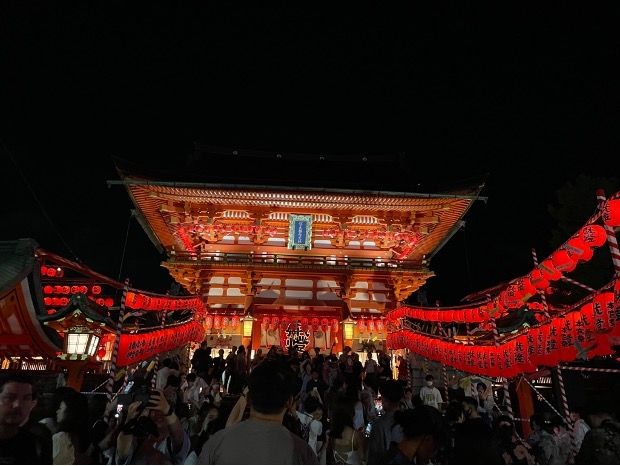
I was also fortunate enough to be in Kyoto for Gion Matsuri, one of the largest festivals in Japan that celebrates the Yasaka Shrine and culminates in a long procession of hand-made floats, 32 to represent each of the prefectures in the country. On a bright, sunny summer day in July, thousands flocked to the streetsides, many dressed in traditional yukata, lighter summer kimono, to watch those involved with the festival pull or carry these floats (yes, carry them!) along the street right outside the CIEE Kyoto center. The floats, each with their own intricate design, come one after another in bright colors against a blue sky, traditional music being played from people sitting inside of them and those in the procession. The energy is infectious, “oohs” and “aahs” and applause to acknowledge the sheer amount of effort it must take to accomplish such a feat. It was one of the best parts of my trip to say the least.
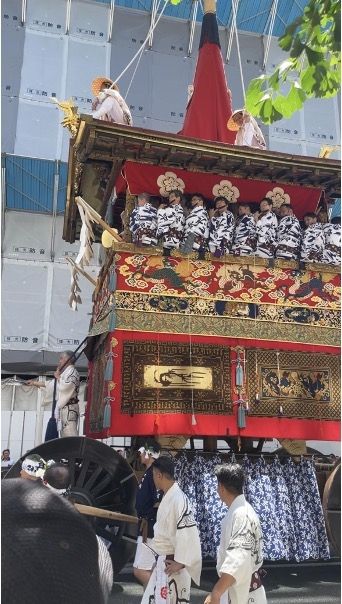
My time in Kyoto was some of the most informative and connected to Japanese culture I’ve felt. No pictures can do it justice, or truly encapsulate what it was like to be there in these moments, though I hope they can give you some insight, whether you’re planning on coming to Kyoto, or just considering where to go abroad!
Related Posts
Kickin’ it in Kyoto
Hey all, my name is Ethan Adams. I’m a Junior at Hope College (Michigan) who embarked on an adventure abroad with CIEE’s Ancient and Modern Japan (AMJ) program. Now, two... keep reading
How to Study Japanese in Japan: 3 Easy Steps
If you’ve ever dreamed of ordering ramen like a pro, exploring ancient temples, or binge-watching anime without subtitles, studying Japanese in Japan is your next big adventure. With vibrant Tokyo... keep reading
Abroad in Japan: Day in Osaka
Authored by Sarah Vu Want an amazing to stop by in the Kansai area while traveling Japan? Well yes, you must stop by Osaka if you’re visiting Japan. There is... keep reading

